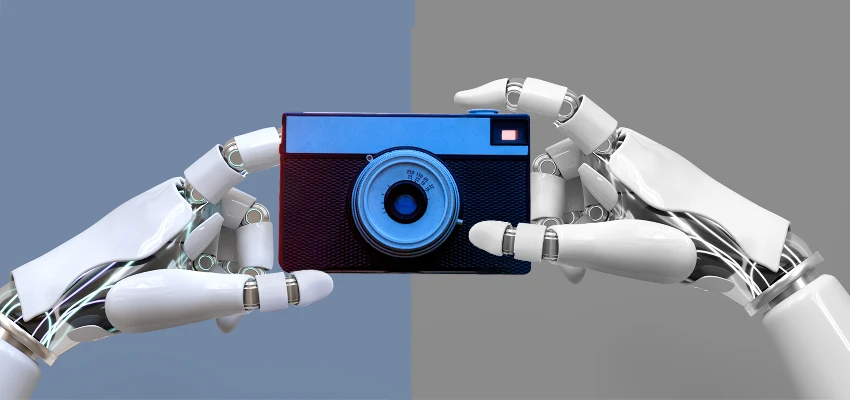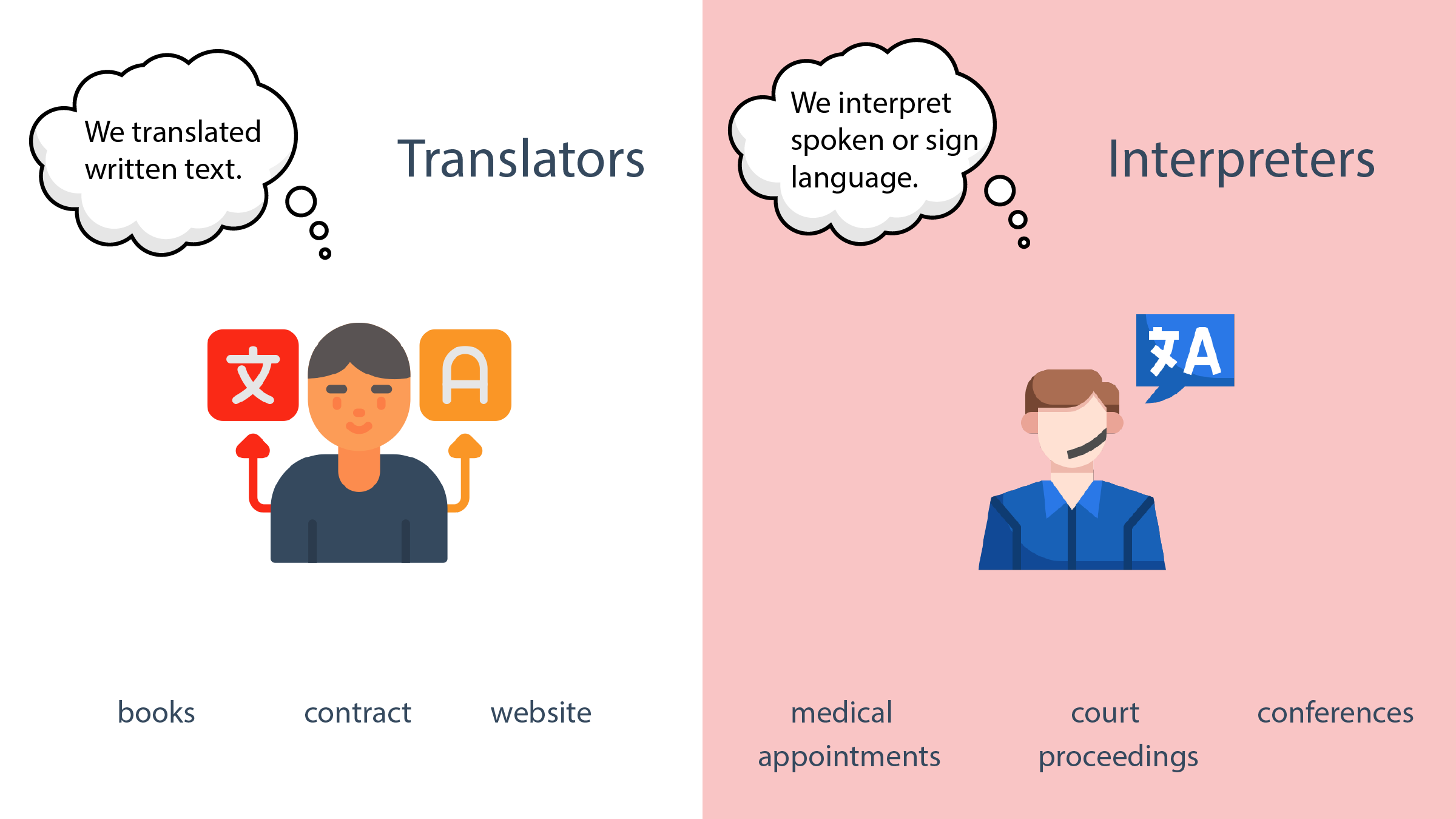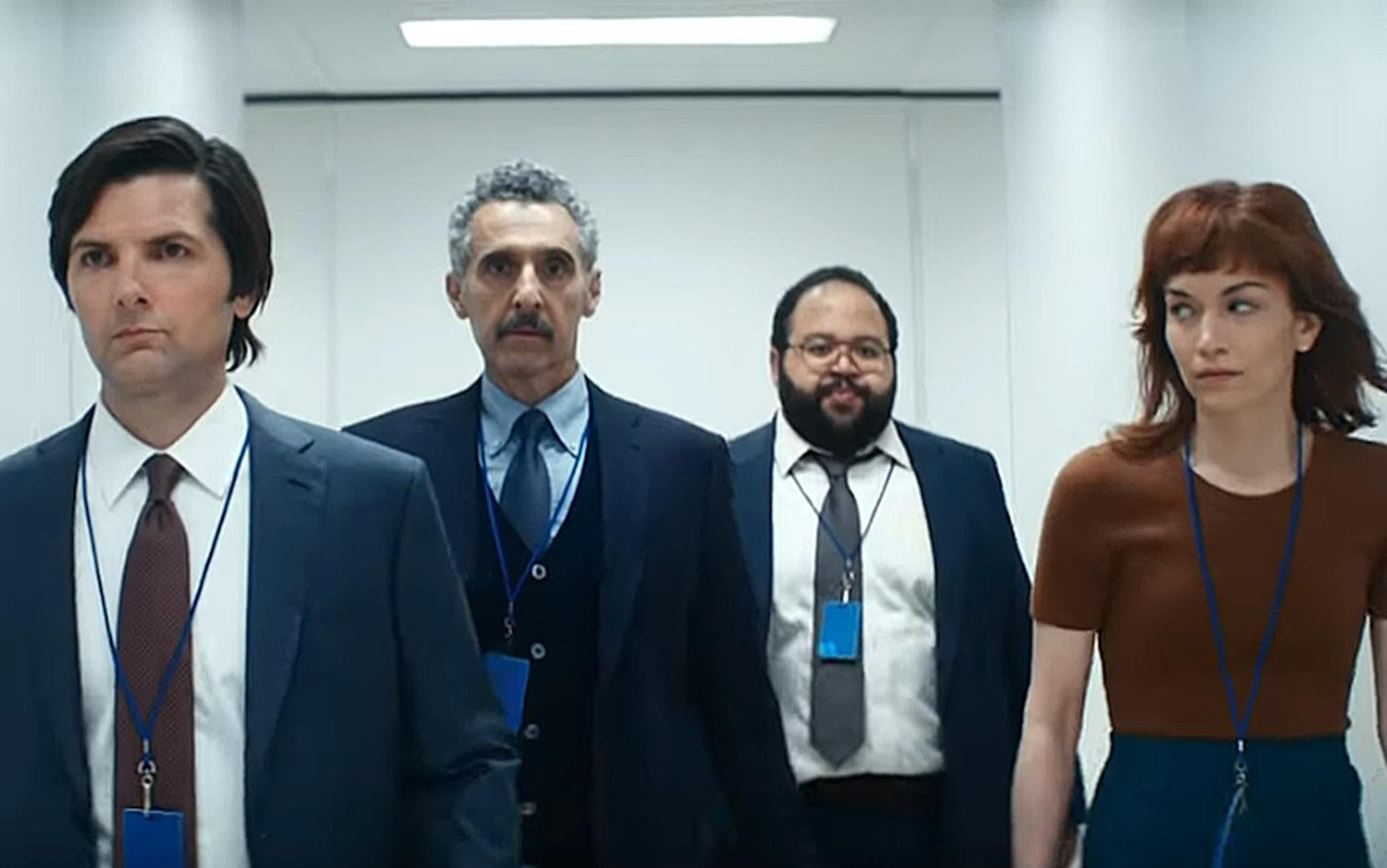AI in photojournalism is changing the landscape of visual storytelling, presenting both challenges and opportunities. As technology continues to evolve, the use of photojournalism technology can either undermine authenticity or serve to enhance the preservation of crucial narratives. Kira Pollack, an Emmy award-winning visual storyteller, advocates for the integration of AI photography tools to safeguard the invaluable records within photo archives, ensuring that they reflect the true essence of historical moments. Despite concerns about the potential dangers of synthetic imagery, Pollack believes that AI can play a pivotal role in cataloging and contextualizing the work of photojournalists. By exploring the impact of AI on photography, we can find innovative ways to maintain the integrity of visual media while embracing the benefits of technological advancements.
In the evolving realm of visual journalism, the infusion of artificial intelligence presents a dynamic intersection of technology and storytelling. The advent of innovative image-making tools underscores a critical dialogue about the future of visual archives, especially concerning the preservation of essential photo collections. Industry leaders like Kira Pollack are now at the forefront of exploring how machine intelligence can be employed to maintain the authenticity and accessibility of visual narratives. This quest not only addresses the preservation of historical imagery but also raises pertinent questions regarding authorship and ethical use within the digital landscape. As we navigate these complexities, understanding the role of AI in this context is vital for ensuring that the heart of photojournalism remains intact amidst rapid technological change.
The Role of AI in Revolutionizing Photojournalism
Artificial intelligence (AI) has emerged as a powerful tool in various industries, and photojournalism is no exception. As Kira Pollack emphasizes, this technology holds the potential not only to challenge traditional practices but also to enhance the field significantly. By enabling photojournalists to innovate and streamline their processes, AI can facilitate faster and more accurate storytelling. Tools developed using AI can assist in organizing vast archives, making it easier for photojournalists to access and utilize historical images effectively. This duality of AI demonstrating both threat and opportunity is crucial for the future of photojournalism.
Moreover, the integration of AI photography tools can help preserve the visual integrity of photojournalism during a time when misinformation spreads rapidly. As AI algorithms can analyze and assess complex images, they can assist journalists in providing context and accuracy in their reporting. This capability holds particular significance in war photography, where understanding the nuances of conflict is essential. By harnessing AI, photojournalists like Pollack can work toward maintaining the authenticity of their craft, ultimately contributing to a more honest representation of global events.
Preserving Photo Archives with Innovative Technology
One crucial aspect of Kira Pollack’s research at the Shorenstein Center is focused on the preservation of photo archives. As she highlights, many significant works created by photojournalists remain unseen, trapped in dusty boxes, and at risk of being lost forever. Implementing AI in photojournalism can facilitate the cataloging and discovery of these invaluable collections. With advanced algorithms capable of identifying, categorizing, and contextualizing images, the potential for accessible archives becomes a reality. This ensures that future generations can appreciate and learn from the rich visual history documented by these artists.
In addition to enhancing accessibility, AI tools can help safeguard the integrity of photojournalistic images. By maintaining careful oversight over how images are used in AI training, the concerns regarding copyright and ownership can be mitigated. The preservation of these archives becomes a matter of ethical responsibility, ensuring that the original photographers’ rights are respected. Pollack’s initiative exemplifies a proactive approach to navigating the challenges posed by AI, centering on the need to protect the legacy and intent of those who have captured defining moments through their lenses.
AI Ethics and the Future of Visual Storytelling
As AI technology continues to advance, the ethical implications surrounding its use in photography cannot be overlooked. Kira Pollack raises essential questions about the impact of AI on authorship and ownership in photojournalism. With the risk of images being appropriated without consent, there is urgency in establishing clear boundaries surrounding the use of photographers’ work in AI systems. Pollack’s work advocates for ethical AI practices that prioritize truth and respect for the artist’s intent, ensuring that technology enhances rather than exploits the craft of photojournalism.
Moreover, the integrity of visual storytelling relies heavily on public trust, which is threatened by the rise of generative AI that produces synthetic images. As news is disseminated rapidly through social media, the challenge lies in differentiating authentic journalism from fabricated content. Pollack’s exploration of how AI tools can responsibly preserve real photojournalistic work is a vital component of safeguarding this trust. By engaging with diverse experts and fostering interdisciplinary dialogue, she seeks to bridge the gap between technology and journalism, paving the way for a future where both can coexist harmoniously.
Importance of Dialogue Across Disciplines in AI Development
Given the complexities surrounding the integration of AI in photography, Pollack believes that collaboration across various fields is essential. Engaging with technologists, ethicists, journalists, and policymakers allows for a more comprehensive understanding of the implications of AI technology on photojournalism. This dialogue fosters innovative approaches to leveraging AI tools while addressing concerns about misinformation and copyright violations. By working together, stakeholders can develop strategies that ensure the responsible use of AI, reinforcing the core values of photography—truth, authorship, and memory.
In a constantly evolving landscape, the ability to synthesize insights from different disciplines is invaluable. By learning from others’ perspectives, Pollack aims to steer the conversation toward ethical AI practices that promote visual integrity. This effort to create a responsible framework for AI in photojournalism not only serves the immediate community but also sets a precedent for other industries facing similar challenges. The establishment of collaborative dialogues emphasizes the necessity of shared knowledge in navigating the future of technology without losing sight of fundamental journalistic principles.
AI Tools: Enhancing Exploration in Photojournalism
One of the critical aspects of integrating AI into photojournalism is its ability to enhance exploration and discovery. With the assistance of AI tools, photojournalists can delve into their archives with unprecedented efficiency. By automating the analysis and categorization of images, AI can identify narratives and themes within a large body of work that might go unnoticed. Pollack’s experiments demonstrate how AI can assess emotions, composition, and context, thus allowing photojournalists to unlock deeper meanings behind their images.
This exploration is not just about preserving the past but also about informing the present and future of photojournalism. By providing insights into historical contexts and emotional responses, AI tools can assist journalists in crafting more compelling narratives. As photojournalism faces the threat of being overshadowed by synthetic imagery, tools that enhance authenticity and contextual understanding become essential. Implementing AI for exploration thus serves not only as a preservation strategy but also as a means to enrich the storytelling practices within the industry.
Overcoming Challenges of AI in Photojournalism
Despite the promising potential of AI in photojournalism, numerous challenges remain. The tension between leveraging AI to enhance the craft and mitigating its risks poses a significant concern. As Kira Pollack identifies, utilizing AI for archiving and organizing images must be done thoughtfully to avoid compromising the integrity of the work. Ensuring that AI tools function ethically requires a robust framework to protect photojournalists’ rights and intellectual property.
Additionally, there are concerns regarding the public’s perception of authenticity in imagery. As generative AI continues to evolve, distinguishing between real and fabricated images in the media landscape becomes increasingly difficult. Pollack’s efforts to explore the motivations and implications of using AI in photojournalism will help guide best practices that prioritize authenticity. By addressing these challenges head-on, the photojournalism community can work toward a healthier coexistence with technology that honors the longstanding traditions of the craft.
Impact of AI on Photography: A Dual Perspective
The impact of AI on photography is multifaceted, encompassing both challenges and opportunities. As Kira Pollack’s experiences in corporate settings illustrate, the arrival of sophisticated AI tools has prompted intense contemplation within the photojournalism community. On one side, the proliferation of synthetic imagery can dilute the credibility of visual storytelling, potentially unsettling long-established conventions in journalism. Conversely, the intelligent application of AI can serve to enhance the art form, allowing photojournalists to engage more profoundly with their audiences.
This dual perspective highlights the importance of adaptive thinking in the face of technological advancements. As photojournalists work to navigate this landscape, understanding how AI reshapes narrative structures and visual dynamics is crucial. Pollack’s research underlines the necessity of actively engaging with AI, steering its evolution to empower storytellers while safeguarding the ethos of truth and representation in photography.
Future Possibilities: AI-Driven Narratives in Journalism
Looking ahead, the future of photojournalism may be significantly reshaped by AI-driven narratives. The ability of AI tools to analyze and interpret vast amounts of visual data suggests new avenues for storytelling. Rather than relying solely on traditional methods, photojournalists can embrace technology to sculpt richer narratives that offer more profound insights into the human experience. Pollack’s commitment to exploring these innovative possibilities can lead to a reinterpretation of how visual histories are documented and disseminated.
AI’s capacity to create immersive experiences means that future audiences will likely engage with photojournalism in ways that are currently unimaginable. By merging technology with meaningful storytelling, photojournalists can craft narratives that resonate deeply with viewers. This evolution points to an exciting yet responsible future for the industry, one where AI acts as an ally rather than a rival, preserving the art of photography for generations to come.
Frequently Asked Questions
How is AI in photojournalism influencing the preservation of photo archives?
AI in photojournalism is being leveraged to enhance the preservation of vast archives of visual stories that document significant historical events. By utilizing AI photography tools, photojournalists can catalog, organize, and contextualize their work, making it more accessible and discoverable. This technology helps ensure that the unique contributions of these artists are preserved for future generations, safeguarding the visual record of history.
What are the potential impacts of AI on photography and photojournalism?
The impact of AI on photography and photojournalism is multifaceted. On one hand, AI poses challenges such as copyright violations and the proliferation of synthetic images that can blur the line between reality and fabrication. On the other hand, AI also presents opportunities for greater creativity and efficiency in photojournalism, enabling professionals to harness advanced tools for organizing and preserving their work, enhancing the storytelling experience.
Can AI photography tools help improve the accuracy of photojournalistic narratives?
Yes, AI photography tools can significantly enhance the accuracy of photojournalistic narratives by providing detailed analyses of images, including context, emotions, and composition. This capability helps photojournalists extract insights from their work that enrich the storytelling process, ensuring that the complexities of their narratives are conveyed accurately and powerfully.
What ethical considerations surround the use of AI in photojournalism?
The ethical considerations surrounding AI in photojournalism include the potential for misuse of images in AI training datasets without proper consent, the risk of copyright infringement, and the erosion of trust in visual media due to generative AI creating photorealistic images. Addressing these concerns is crucial to ensure that AI serves to preserve the integrity of photojournalism rather than undermining it.
How is Kira Pollack utilizing AI in her research on photojournalism technology?
Kira Pollack is utilizing AI in her research to explore how it can help preserve and enhance the visual archive of photojournalism. Through case studies, she is investigating how AI can catalog and organize images from significant historical moments while maintaining ethical standards and respecting photographers’ rights. Her focus is on employing AI technology to safeguard the narrative and legacy of photojournalistic work.
What role does AI play in safeguarding the future of photojournalism?
AI plays a crucial role in safeguarding the future of photojournalism by providing innovative solutions for preserving and accessing photographic archives. By enhancing the discoverability of a wealth of visual stories and enabling ethical management of photo assets, AI has the potential to fortify the foundation of photojournalism as it adapts to the challenges posed by new technologies.
Why is it important to preserve photo archives in the age of AI?
Preserving photo archives in the age of AI is vital to maintain a historical record of events and to ensure that the authentic visual storytelling of photojournalists is not lost in the face of digitally fabricated images. These archives serve as crucial documentation of the real world and contribute to our understanding of history, culture, and society, making their preservation essential.
| Key Point | Description |
|---|---|
| Threat of AI to Photojournalism | AI poses risks such as copyright violations and the creation of synthetic images that undermine trust in photography. |
| Preserving Archives | The Shorenstein Fellowship explores ways to use AI to protect the archives of photojournalists, which document significant historical events. |
| Dual Nature of AI | While AI threatens the authenticity of images, it also offers tools for cataloging and organizing photojournalistic archives. |
| Qualitative Analysis of Images | AI has successfully analyzed complex images, extracting nuanced insights that enhance understanding of the context. |
| Ethical Considerations | The use of AI must be managed carefully to maintain integrity, truth, and copyright in the world of photography. |
| Community Engagement | There is a need for collaborative dialogue among technologists, ethicists, and journalists to navigate the future of AI in photojournalism. |
Summary
AI in photojournalism presents both challenges and opportunities for the industry. While it threatens the authenticity of images through synthetic creation and copyright issues, it also holds potential for the preservation of photojournalistic archives. Visionaries like Kira Pollack are leveraging AI technology to ensure that the remarkable work of photojournalists and the visual history of our world are not lost. The development of ethical frameworks and collaborative dialogues across disciplines will be crucial in navigating this evolving landscape and reinforcing the fundamental values of truth and authorship in photography.



